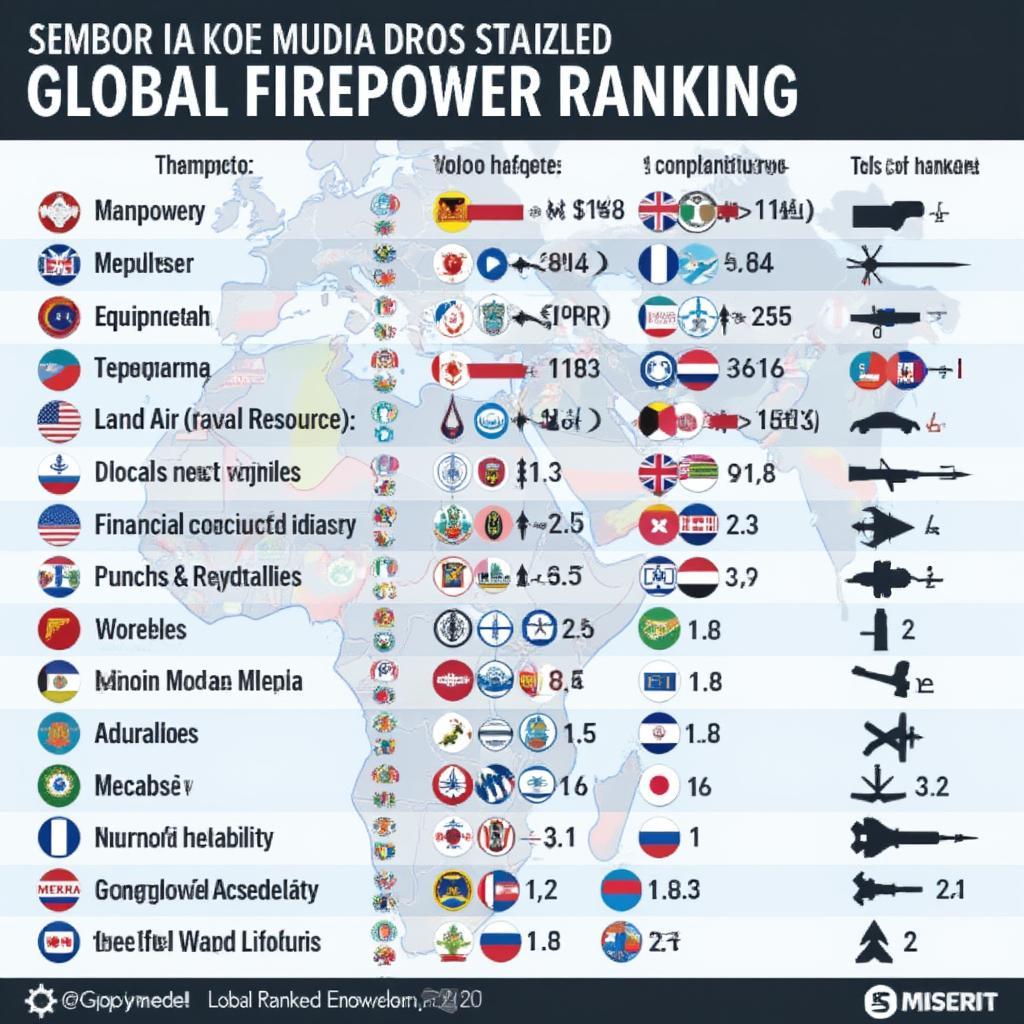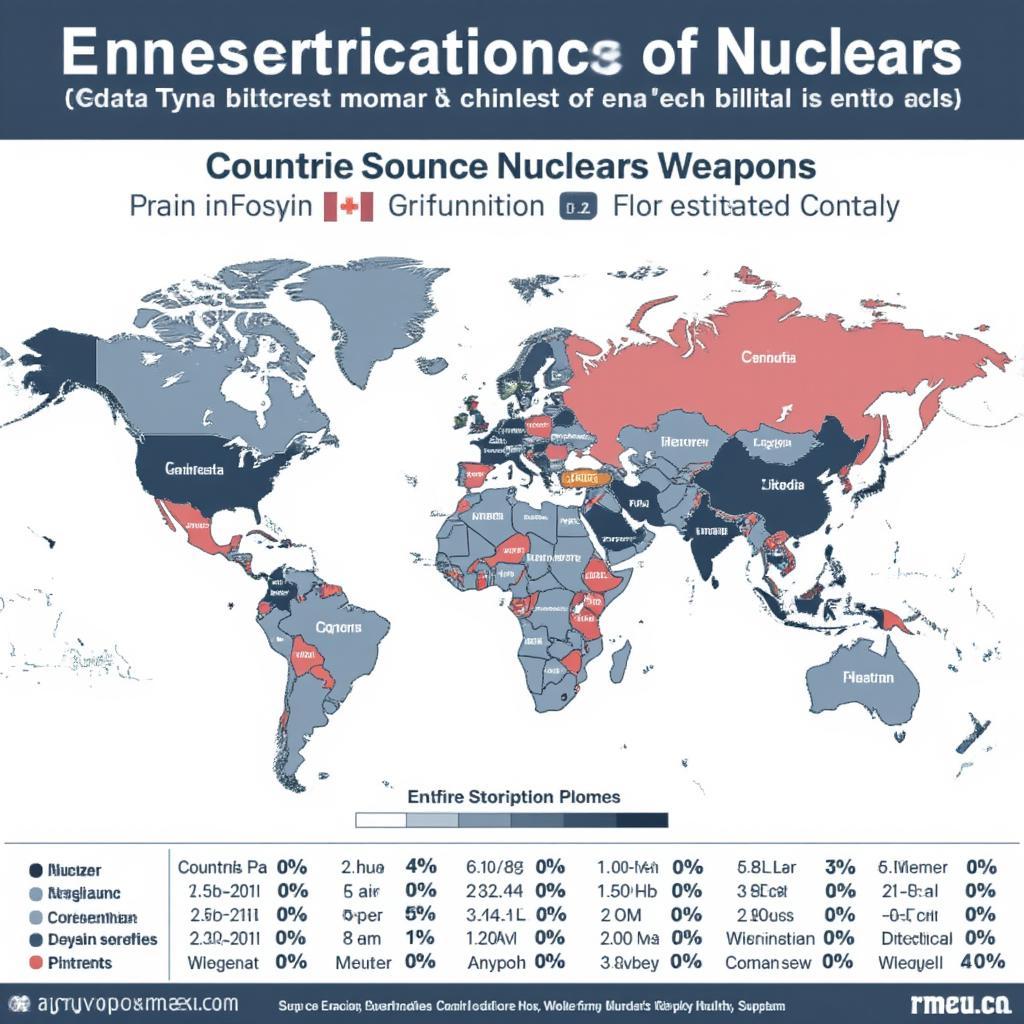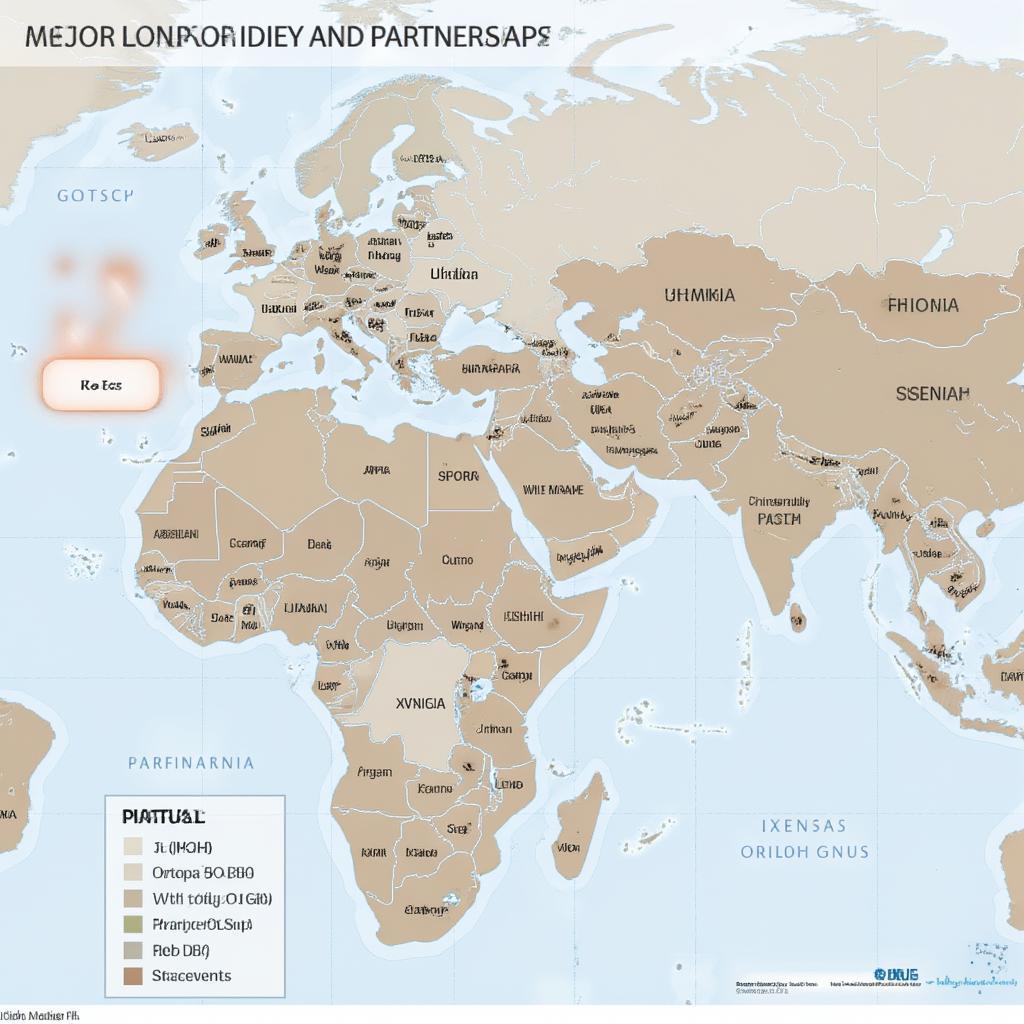Decoding the Global Firepower Ranking: A Comprehensive Analysis

The Global Firepower (GFP) ranking is a comprehensive annual assessment of a nation’s military strength. It provides a data-driven analysis comparing over 145 countries across various factors, offering insights into global military capabilities and potential power dynamics. This ranking considers a nation’s conventional warfare capabilities, excluding nuclear weaponry, but factoring in geographical factors, logistical flexibility, available natural resources, and the industry supporting a nation’s defense sector.
Understanding the Global Firepower Index Methodology
The GFP ranking employs a unique PowerIndex score, ranging from 0.0000 (representing perfect military strength, an unattainable ideal) to higher values indicating comparatively weaker military power. This score is derived from over 60 individual factors, categorized into manpower, equipment, natural resources, finances, and geography. No single factor dominates; instead, the system is designed to balance out perceived strengths and weaknesses.
Key Factors Influencing the Rankings
The GFP ranking considers a wide array of factors. Manpower assessments encompass active military personnel, reserve personnel, available manpower pool, and even population size. Equipment inventory spans land systems (tanks, artillery, armored vehicles), air power (fighters, bombers, helicopters), naval strength (aircraft carriers, destroyers, submarines), and logistical support capabilities. Natural resources, crucial for sustaining military operations, include oil production and reserves, as well as access to strategic resources. Financial factors such as defense budget, external debt, and purchasing power parity further contribute to the score. Finally, geographical factors like coastline length, border sharing, and available infrastructure contribute to the overall assessment.

Debunking Common Misconceptions about the GFP Ranking
While the GFP ranking offers valuable insights, it’s crucial to understand its limitations. It doesn’t solely focus on the sheer quantity of weapons; qualitative factors like weapon systems’ modernity, training levels, and leadership effectiveness are also indirectly incorporated through assigned bonuses and penalties within the underlying formula. Nuclear capabilities, while excluded from the direct assessment, are acknowledged as a significant power factor, but not explicitly quantified within the ranking.
Addressing the Nuclear Question
The GFP ranking deliberately excludes nuclear weapons from its formula due to the complex nature of nuclear deterrence and the difficulty of quantifying their strategic impact. The possession of nuclear weapons undoubtedly alters the geopolitical landscape but doesn’t directly translate to conventional military strength, which is the primary focus of the GFP assessment.
“While nuclear arsenals represent a significant deterrent, the Global Firepower Ranking prioritizes assessing a nation’s ability to engage in conventional warfare scenarios,” explains Dr. David Miller, a strategic defense analyst at the Institute for Global Security Studies.
The Role of Geography and Logistics in Military Power
Geographical factors significantly influence a nation’s military strength. Coastline length affects naval power projection, while shared borders and terrain types impact land-based operations. Infrastructure quality is vital for troop and equipment mobility. Logistical capabilities, encompassing transportation networks, fuel reserves, and industrial capacity, are critical for sustaining military campaigns. The GFP ranking acknowledges these crucial aspects, integrating them into its comprehensive assessment.

Beyond Hardware: The Human Element
While advanced weaponry is crucial, the human element remains paramount in military effectiveness. Training, morale, leadership, and combat experience all contribute to a fighting force’s overall capability. The GFP ranking indirectly accounts for these factors by considering metrics such as the number of active personnel, reserve forces, and the overall population pool, reflecting the potential for manpower mobilization and training.
“Military strength isn’t solely about hardware; it’s about the well-trained personnel operating that equipment and the strategic minds guiding them,” states General (Ret.) Michael Carter, former Chief of Staff of the Allied Forces.

Utilizing the Global Firepower Ranking for Analysis
The GFP ranking provides a valuable tool for understanding global military capabilities. It allows for comparisons between nations, identifies rising and declining military powers, and highlights regional power balances. However, it’s essential to interpret the ranking in conjunction with other geopolitical analyses and consider the limitations of a purely quantitative assessment.
Looking Ahead: Future Trends in Military Power
The landscape of military power is constantly evolving. Technological advancements, changing geopolitical dynamics, and shifting economic realities will continue to shape future rankings. Understanding the methodologies and limitations of the GFP ranking, coupled with awareness of broader global trends, provides a more nuanced understanding of global military power.

In conclusion, the Global Firepower ranking offers a valuable framework for analyzing national military strength. By considering a comprehensive range of factors, from manpower and equipment to geography and finances, it provides a data-driven assessment of global military capabilities. However, it is crucial to interpret the ranking with a nuanced understanding of its limitations and acknowledge the multifaceted nature of military power, where factors beyond mere numbers play a decisive role. The GFP ranking should be seen as a starting point for deeper analysis, prompting further investigation into the complex interplay of factors that shape global security and international relations. Understanding the Global Firepower ranking allows for a more informed perspective on the evolving landscape of military power in the 21st century.




